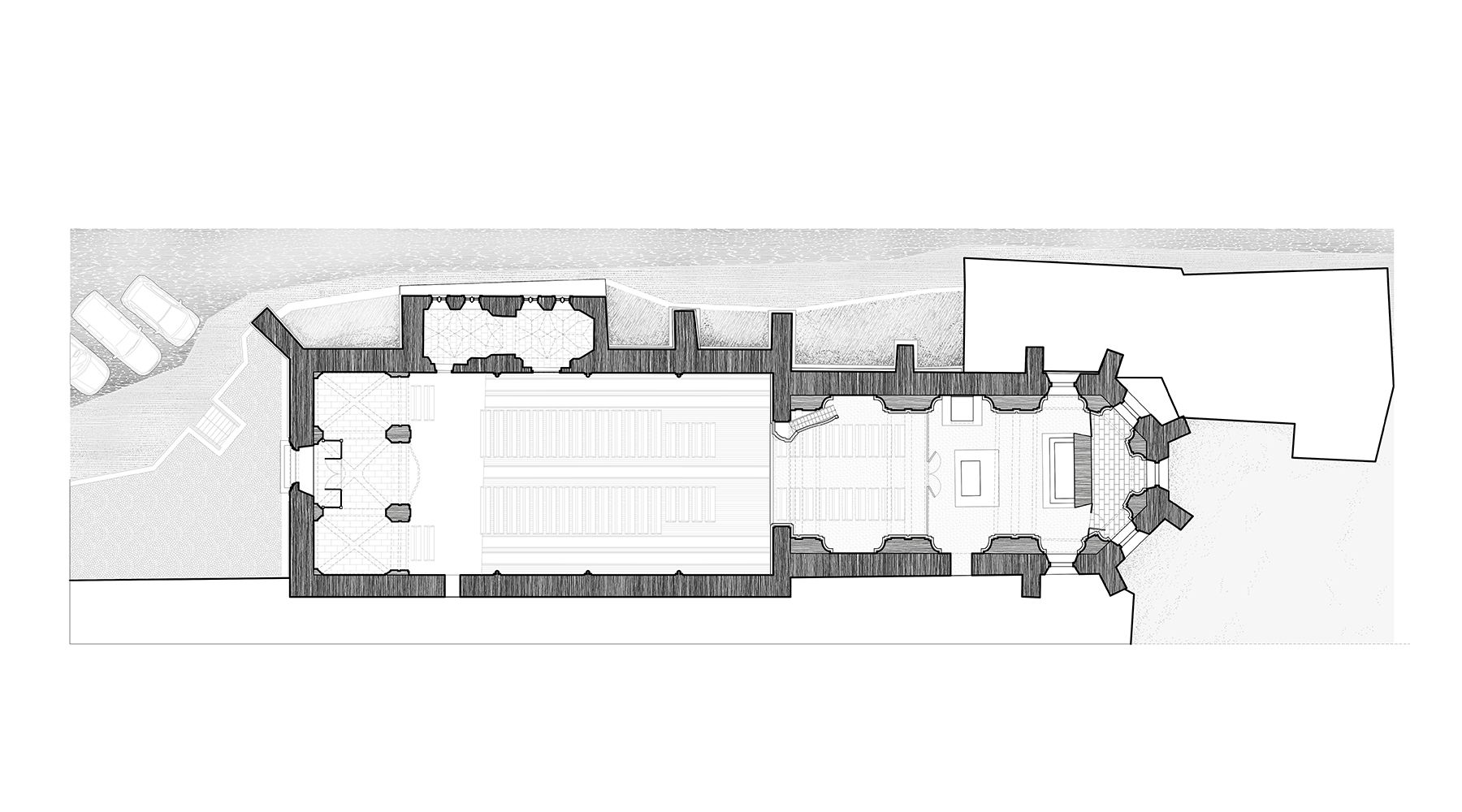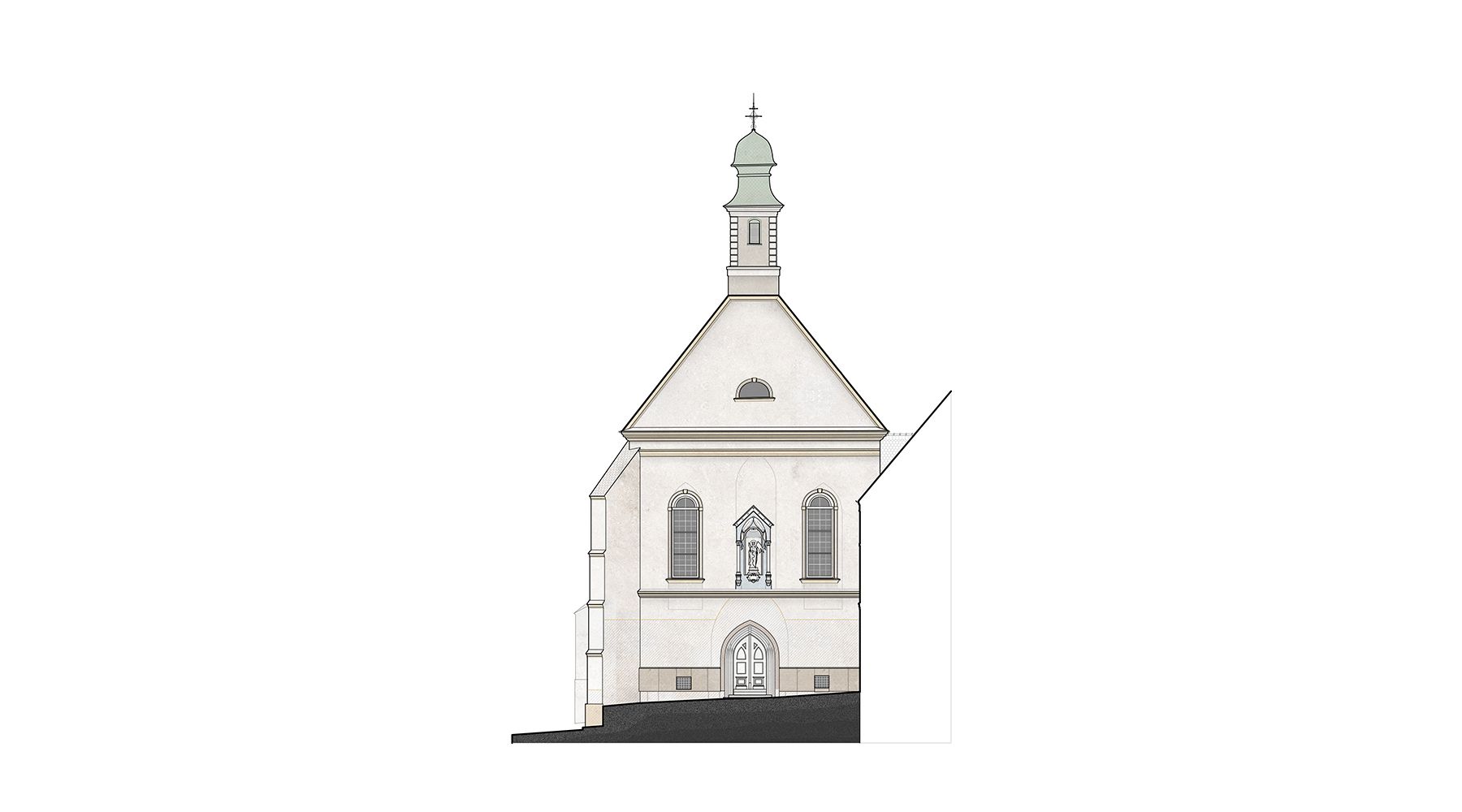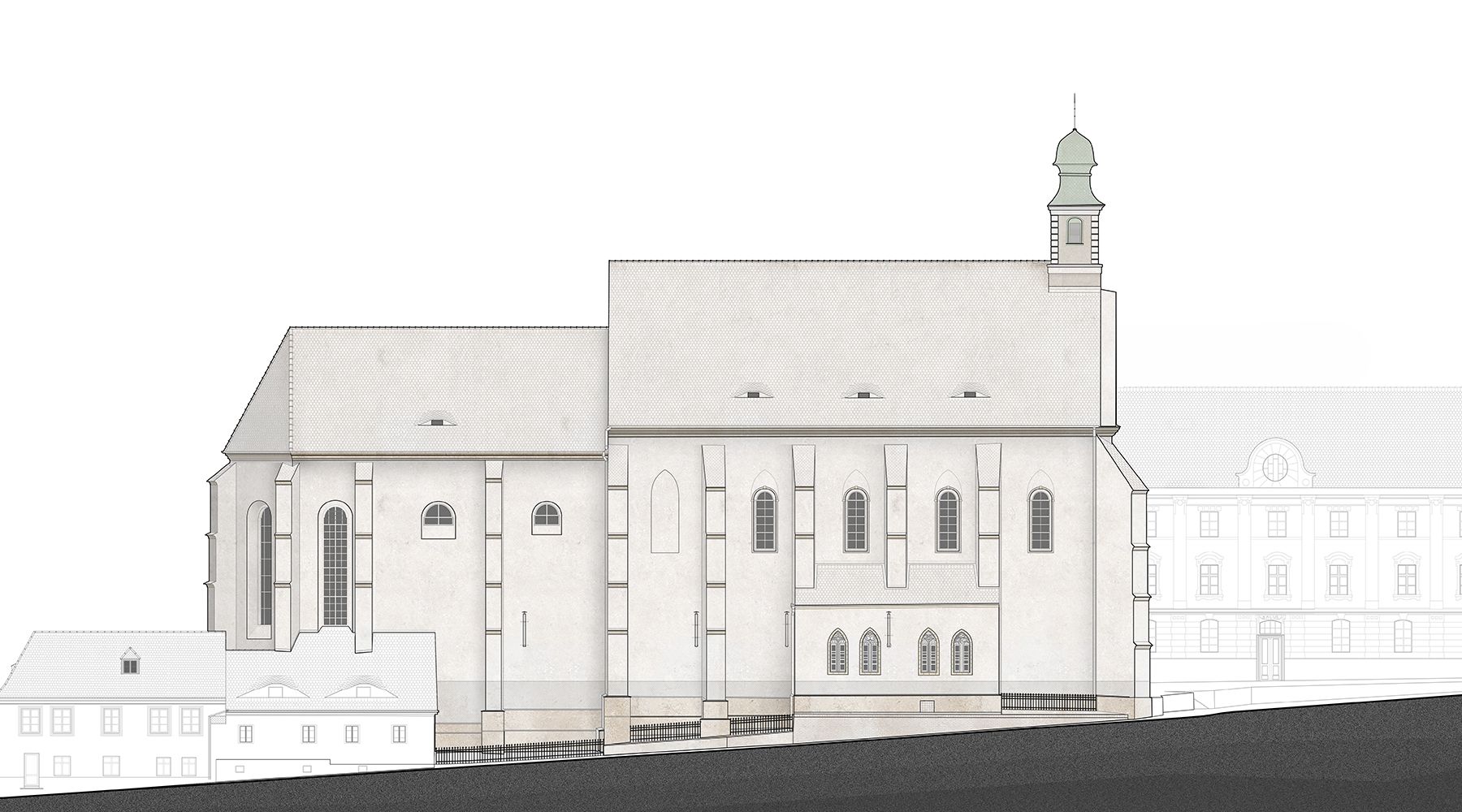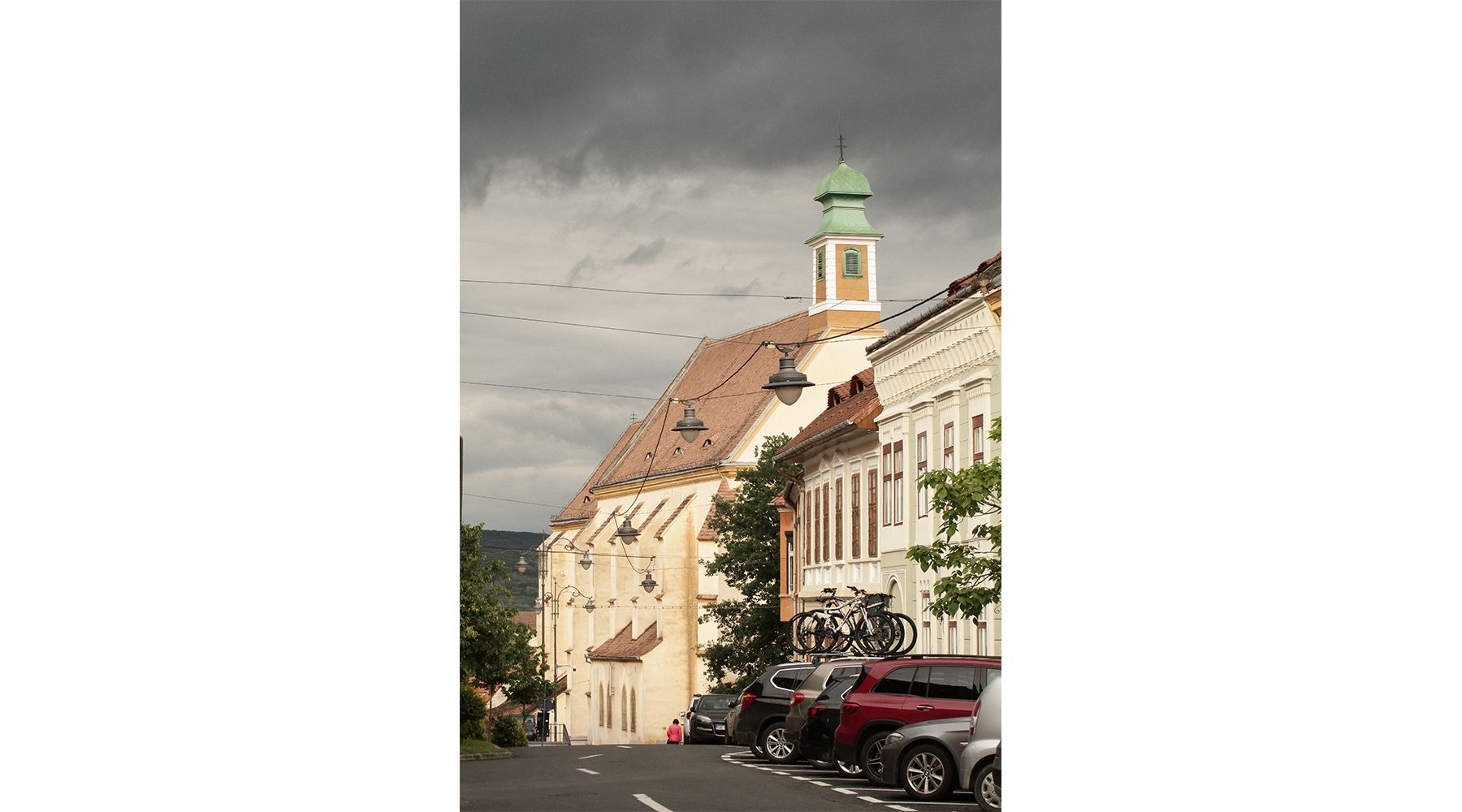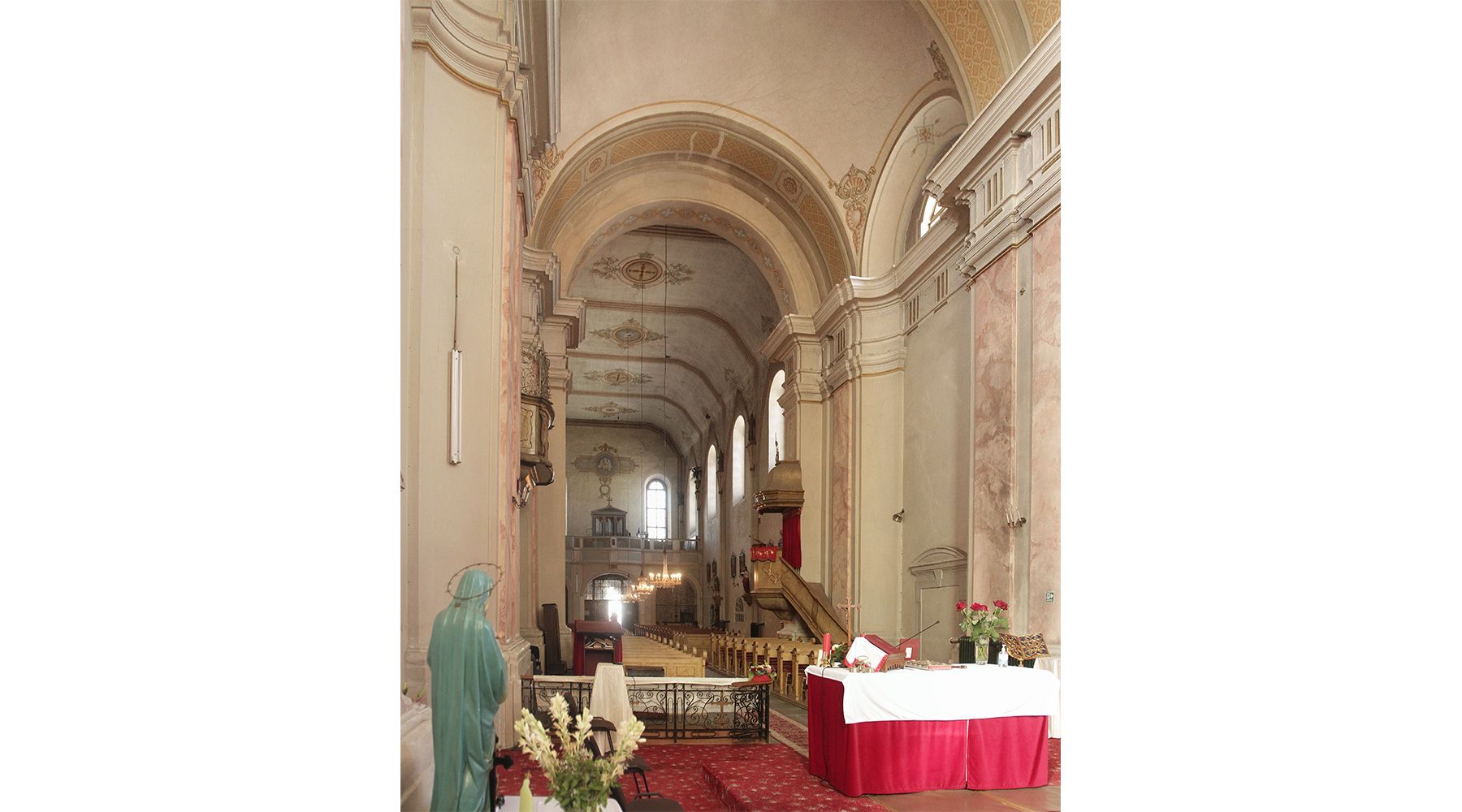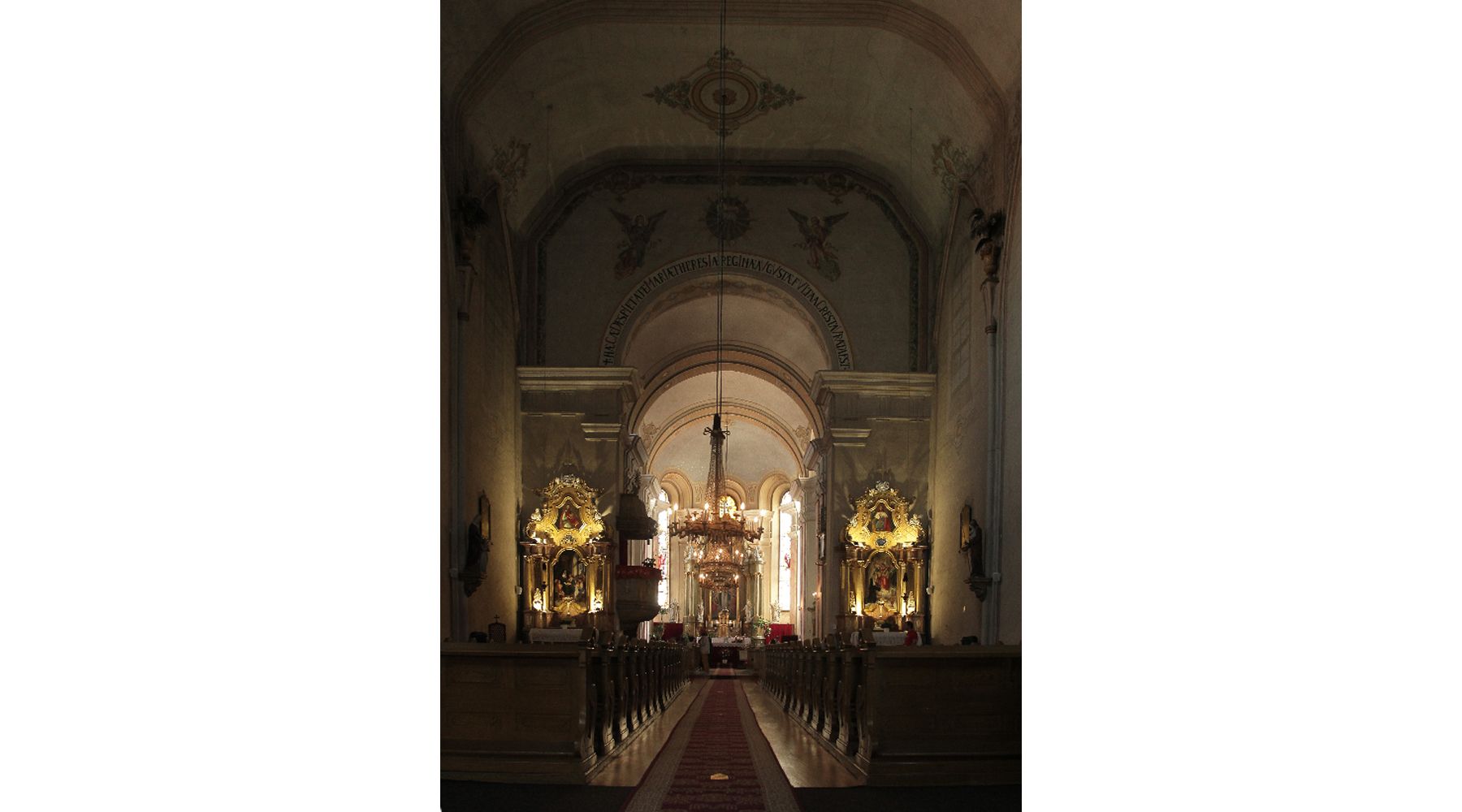The Church of the Ursulines, Sibiu
The Ursuline Church in Sibiu originally belonged to the Gothic style, as a property of the Dominican Order of Friars. The gothic elements that are still visible today include the gothic arch stone portal, the area of the northern chapel, especially the vaults and the windows, but also the exterior buttresses.
In the year of 1543, following the Protestant Reform, the Saxon population of Sibiu converted to Lutheranism, and the Catholic churches became lutheran property. For 150 years, the city of Sibiu was left without any catholic churches.
In 1728, after Transylvania was released from Ottoman influence and Austrian governance was established, the ensemble of the church and the convent was attributed to the Order of Saint Ursula, otherwise known as the Ursuline nuns. The nuns rebuilt the church in the baroque style in which we find it today. The gothic buttresses were reinforced with interior pilasters that sustain the baroque vaults of the altar. In the area of the nave, the gothic vaults were destroyed and replaced with a polygonal ceiling. The shape of the windows was converted from gothic arches to round arches, but the exterior facades preserve the original contour of the windows through a dent in the plaster.
The intervention is mainly technical and targets the restoration of the exterior elevations. The Ursuline Church has been the subject of various restoration works over time, so none of the original plaster is preserved. In its current state, the building is covered in a cement-based coating, affected by water infiltrations, especially in the area of the pedestal. The project proposes uncovering the affected area, while preserving the aforementioned dents, and restoring it using a lime-based plaster. Although the entire surface of the facades will be painted, the restored area will be marked with an additional dent, a witness to this contemporary intervention.

